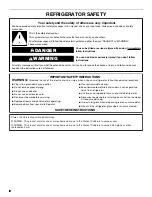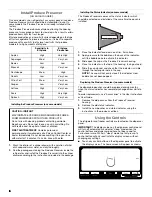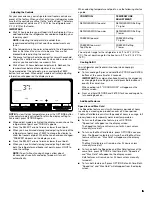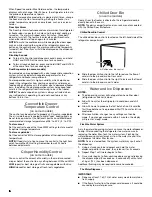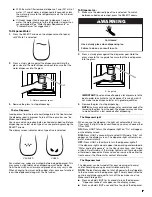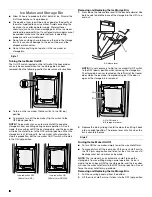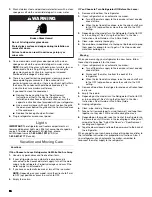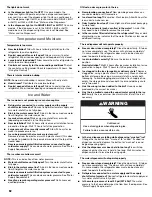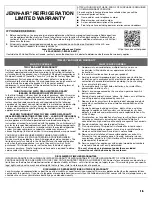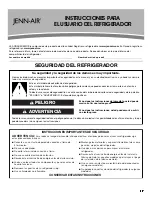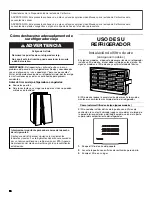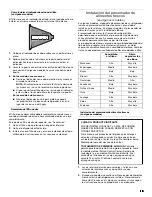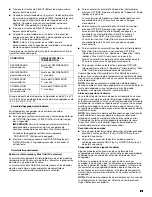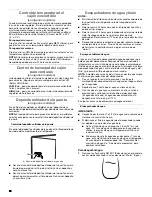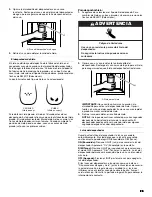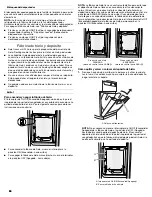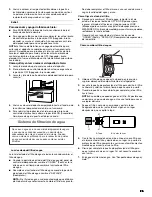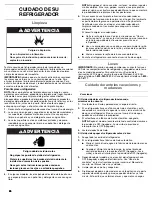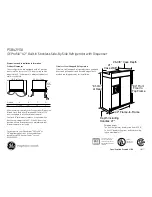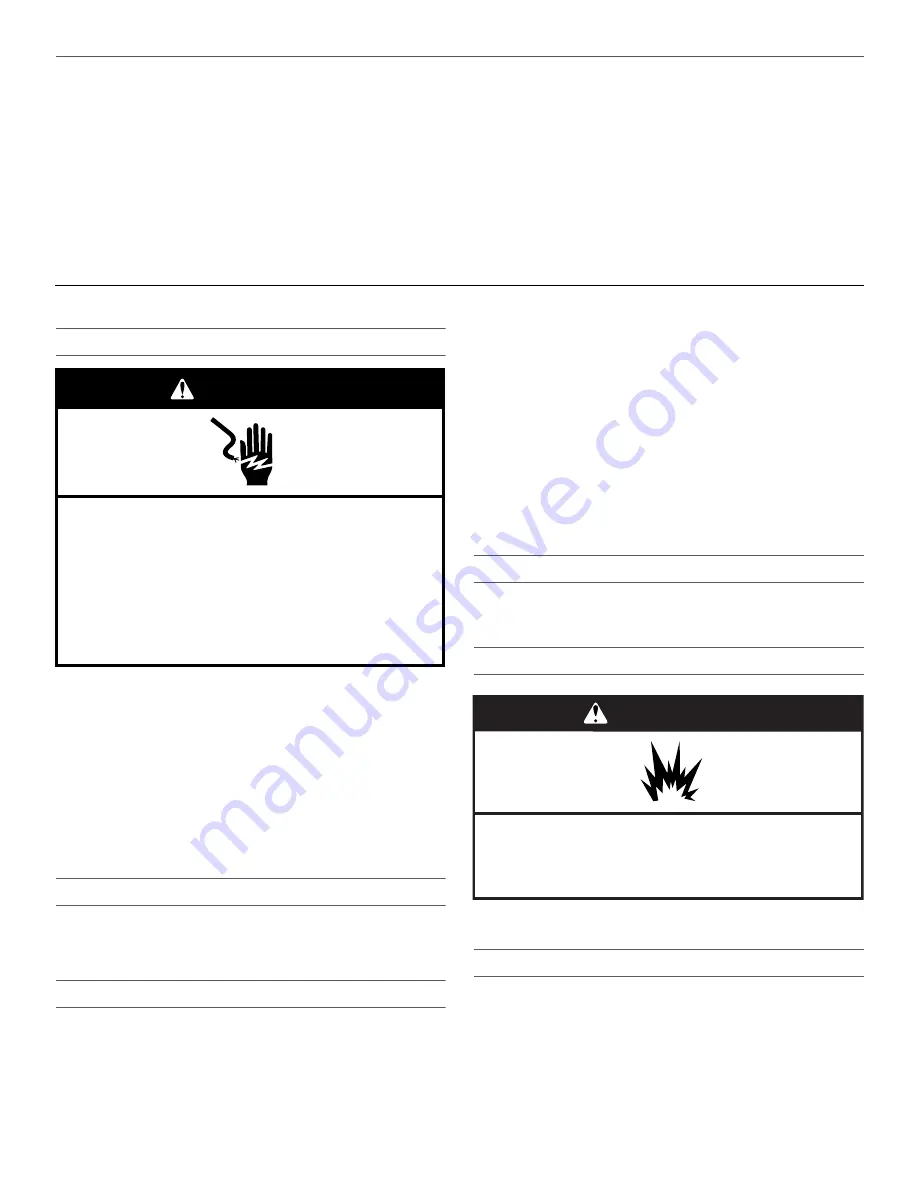
11
11
11
11
11
11
TROUBLESHOOTING
First try the solutions suggested here. If you need further assistance or more recommendations that may help you avoid a service call,
refer to the warranty page in this manual and scan the code with your mobile device, or visit http://jennair.custhelp.com. In Canada,
visit www.jennair.ca (website may not be compatible with some mobile devices).
Contact us by mail with any questions or concerns at the address below:
In the U.S.A.:
Jenn-Air Brand Home Appliances
Customer eXperience Center
553 Benson Road
Benton Harbor, MI 49022-2692
In Canada:
Jenn-Air Brand Home Appliances
Customer eXperience Centre
200 – 6750 Century Ave.
Mississauga, Ontario L5N 0B7
Please include a daytime phone number in your correspondence.
Refrigerator Operation
The refrigerator will not operate
■
Power cord unplugged? Plug into a grounded 3 prong outlet.
■
Is outlet working? Plug in a lamp to see if the outlet is
working.
■
Household fuse blown or circuit breaker tripped? Replace
the fuse or reset the circuit breaker. If the problem continues,
call an electrician.
■
Are controls on? Make sure the refrigerator controls are on.
See “Using the Controls.”
■
New installation? Allow 24 hours following installation for the
refrigerator to cool completely.
NOTE: Adjusting the temperature controls to coldest setting
will not cool either compartment more quickly.
The motor seems to run too much
Your new refrigerator may run longer than your old one due to its
high-efficiency compressor and fans. The refrigerator may run
even longer if the room is warm, a large food load is added, doors
are opened often, or if the doors have been left open.
The refrigerator seems noisy
Refrigerator noise has been reduced over the years. Due to this
reduction, you may hear intermittent noises from your new
refrigerator that you did not notice from your old model. Below are
listed some normal sounds with an explanation.
■
Buzzing - heard when the water valve opens to fill the ice
maker
■
Clicking/Snapping - valves opening or closing
■
Pulsating - fans/compressor adjusting to optimize
performance
■
Rattling - flow of refrigerant, water line, or from items placed
on top of the refrigerator
■
Sizzling/Gurgling - water dripping on the heater during
defrost cycle
■
Popping - contraction/expansion of inside walls, especially
during initial cool-down
■
Water running - may be heard when ice melts during the
defrost cycle and water runs into the drain pan
■
Creaking/Cracking - occurs as ice is being ejected from the
ice maker mold.
The doors will not close completely
■
Door blocked open? Move food packages away from door.
■
Bin or shelf in the way? Push bin or shelf back in the correct
position.
The doors are difficult to open
■
Are the gaskets dirty or sticky? Clean gaskets with mild
soap and warm water.
The refrigerator rocks and is not stable
■
What do I do if the refrigerator rocks and is not stable?
To stabilize the refrigerator, remove the base grille and lower
the leveling feet until they touch the floor. See the “Door
Removal” instructions, either in the User Instructions or the
separate instruction sheet provided with your refrigerator.
Electrical Shock Hazard
Plug into a grounded 3 prong outlet.
Do not remove ground prong.
Do not use an adapter.
Do not use an extension cord.
Failure to follow these instructions can result in death,
fire, or electrical shock.
WARNING
WARNING
Explosion Hazard
Use nonflammable cleaner.
Failure to do so can result in death, explosion, or fire.


